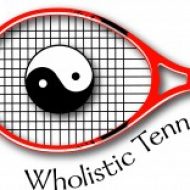Staying on the yin/yang theme for a little longer, let us explore how it applies to actually playing tennis.
As I experiment and continue to explore this theme on the tennis court, I am amazed at what I see and feel.
There seems to be yin and yang working in every movement. It is not only the full body that is in harmony with this, but apparently, each individual movement also.
For example, the non-dominant hand in each stroke has a role to play and it is easy to overlook its importance. In most situations, the non-dominant hand is the yin and it provides support to the swing itself.
The non-dominant hand is huge in the serve. It controls the toss through the speed, rhythm, path and release of the ball and its ultimate steadiness will play a significant role in the quality of a serve. As I said, it is easy to overlook the role of the non-dominant hand because it seems to be ‘far away’ from the action, but if you never paid any attention to it before, go out to the court and explore. Let’s see what happens.
The non-dominant hand is significant in looking at the entire body as a whole, but the yin/yang understanding seems to reveal things on a particular movement also.
For example, let’s take the forehand. The drop of the racket head during the swing reflects the yin phase of the swing and yet at the same time there is the yang that provides the force at contact. How can we feel both at the same time? Many problems in the forehand can stem from the inability to find this balance. This cannot be ‘gotten’ through intellectual understanding, but from experimentation and the feel that arises from that.
I have noticed that when fear arises in me, my hand becomes yang, which would seem to make sense. When threatened, it does seem logical to be ready to fight and yang is that.
On the forehand, for me, this translates to when an awkward ball comes to me or when the mind becomes too active during play, my grip gets tighter and the wrist locks, which, in turn, does not allow the racket head to drop. This will invariably result in an error or a ball hit with no pace.
How is it with you? Bring attention to your body parts and develop what has accurately been called ‘feeling awareness’ as opposed to intellectual awareness, which is not really awareness at all.
There are many such examples so I encourage you to jump on the court and hit balls with friends and experiment with this, all the while exploring both yourself and your body.
Enjoy the journey!
.
